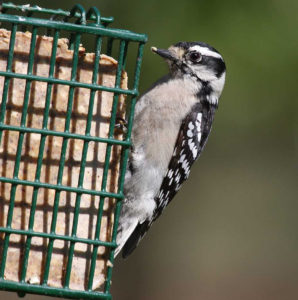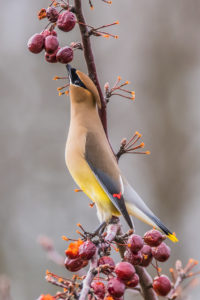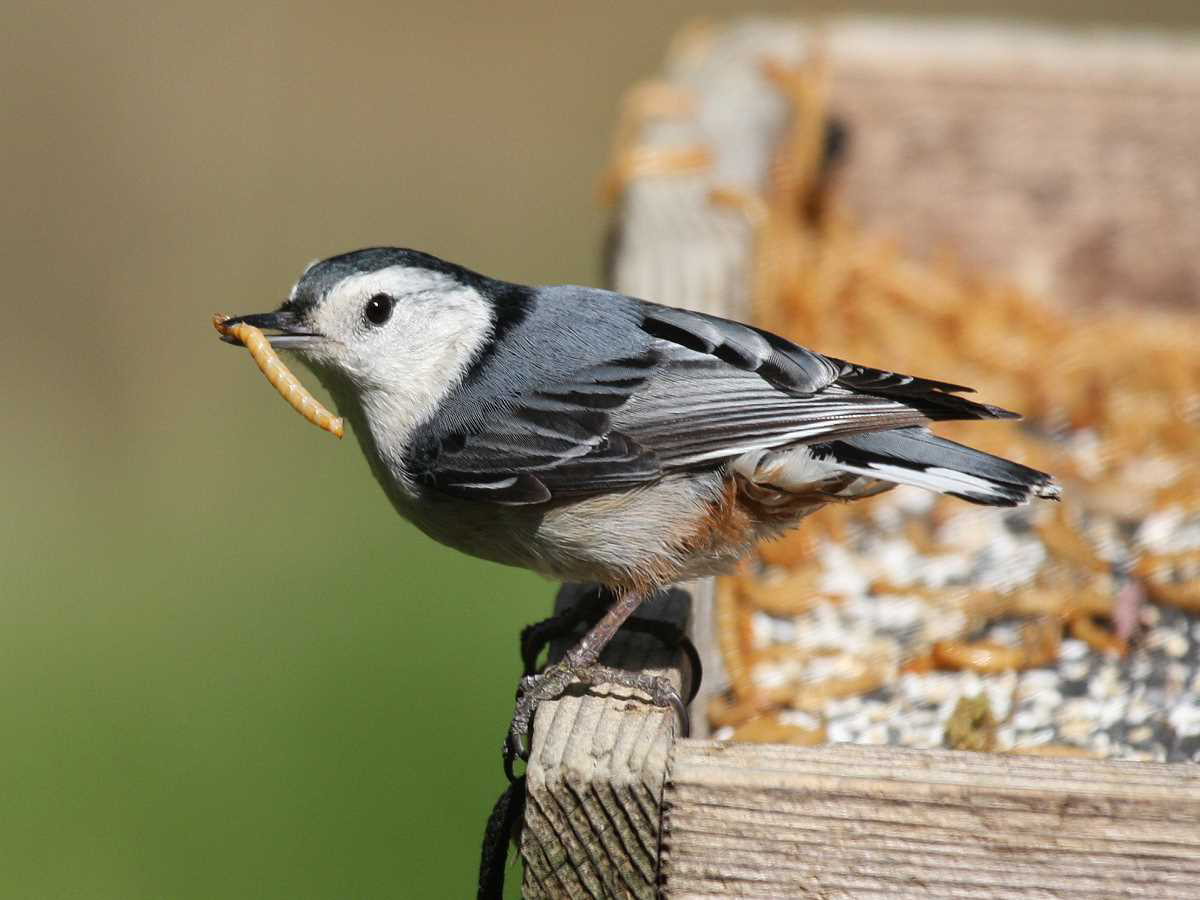Bird feeding is a great way to bird watch, especially in the winter months. Not only are the birds happy to have some supplemental feeding, but we benefit from the ability to watch the birds feed from the comfort — and warmth — of our homes. With Project FeederWatch, you can feed and enjoy the birds while collecting valuable data to help further protect our feathered friends.

Downy Woodpecker by Errol Taskin | Project FeederWatch
Project FeederWatch is a survey of birds that visit backyards, nature centers, and other North American locations. The program is part of the Cornell Lab of Ornithology and runs from November through April each year. This versatile program allows you to count birds that come to your feeders or backyard habitats that attract birds.
The schedule for participating is completely flexible. You pick the days of your choosing and count birds for as long as you would like, then submit your counts online.
Participating in FeederWatch helps you track the birds around your home while contributing to a larger dataset that tracks populations nationwide. This is a great way to help birds and better understand the populations around your own home.
There is a small fee to participate in Project FeederWatch — the annual rate is $18 for U.S. residents. All first-time participants receive a research kit with instructions for participation and a bird ID poster, among other things. In the fall, participants receive a copy of the year-end report. Participants also receive digital access to Living Bird, the Cornell Lab’s award-winning quarterly magazine. The Cornell Lab is currently running a two for one promotion through February — all participants who sign up for the remainder of this season will be automatically signed up for the 2021-2022 season as well.
FeederWatch information and results have been published in a variety of publications. Data from thousands of participants from the U.S. and Canada have created a massive dataset that scientists can use to understand:
- Long term abundance and distribution
- The timing and extent of winter irruptions of species
- Changes in winter ranges
- The kinds of food and environmental factors that attract birds
- How disease is spread among birds that visit feeders

Cedar Waxwing by Laura Frazier | Project FeederWatch
From an individual perspective, FeederWatch is great for learning about the winter birds in your backyard. Counting birds to submit data to others can be an excellent motivator for learning how to identify more bird species. The Cornell Lab has some great tools and resources for helping participants learn the species they see during their counts. This makes FeederWatch a fantastic gateway to birding for young people or those just getting started.
In addition to information on participating, the FeederWatch website also offers information and resources about feeding birds, bird identification tips, and access to previously collected data.
FeederWatch is a great opportunity for people of all ages, skill levels, and backgrounds to participate in community science and contribute to data sets that further conservation efforts for the birds.
Find out more about Project FeederWatch, including how to sign-up, at feederwatch.org.
Featured photo: White-breasted Nuthatch by Errol Taskin | Project Feederwatch
Kalamazoo Nature Center Winter Feeder Count
More locally, the Kalamazoo Nature Center has been gathering data for over four decades in their winter feeder count. This data, from hundreds of Michigan birders, have created a valuable arsenal for tracking bird populations throughout our state. This long-standing dataset can provide useful insights into the trends of Michigan’s winter birds. This bird count is more focused on the birds within Michigan and how their patterns may be changing on a local scale. To find out more about Kalamazoo Nature Center’s Winter Feeder Count, visit naturecenter.org/Conservation/WFC.

